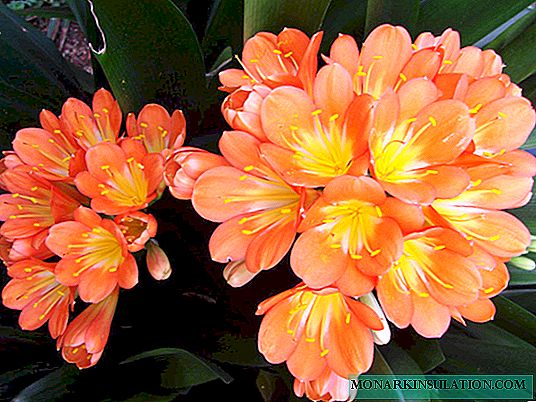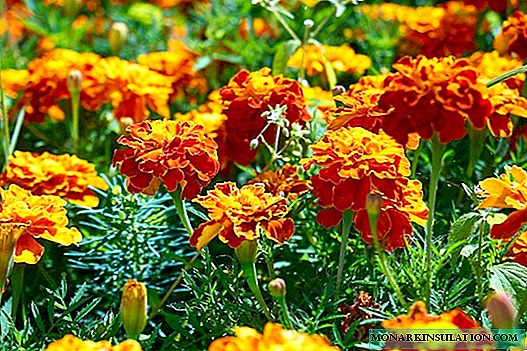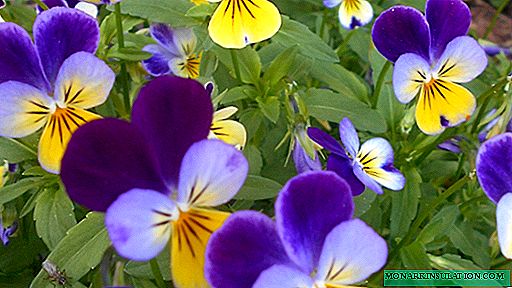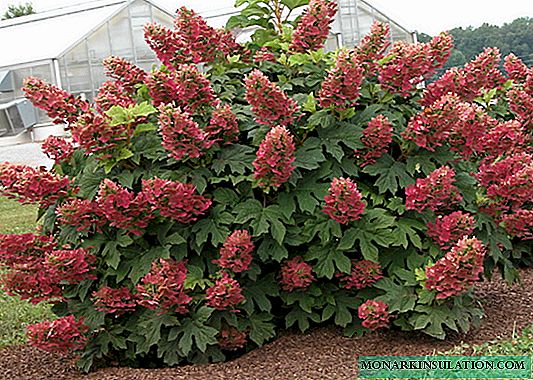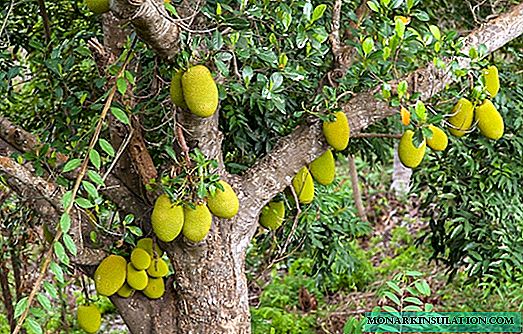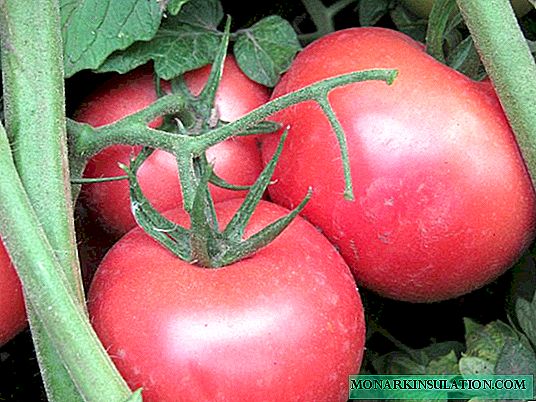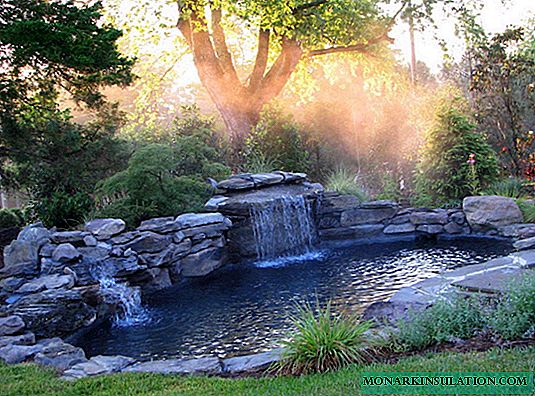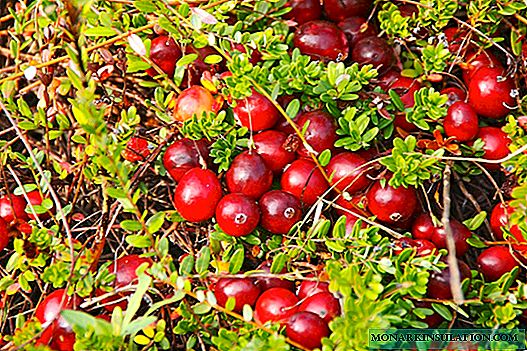
Cranberries are a valuable vitamin berry that grows in sphagnum bogs in conditions where most other berry crops cannot grow. In addition to the bog cranberries familiar to the inhabitants of the Russian North, which has record winter hardiness, there are also more capricious garden varieties with two-centimeter berries - American cranberry large-fruited, suitable for cultivation in regions with a mild climate.
Types and varieties of cranberries: winter-hardy marsh and thermophilic large-fruited
In the northern regions of Russia, many hectares of wetland are occupied by vast wild bushes of marsh cranberries that can easily withstand harsh winters with forty-degree frosts.

Marsh cranberries grow in abundance on peatlands of northern and central Russia
The cultivation of cultural forms of this wonderful medicinal berry began only in the middle of the last century at the Kostroma experimental station, where several very successful highly winter-resistant varieties with berries were created, which were twice or three times larger than the original natural species. Some of them are not inferior in size to the best American varieties of berries, significantly exceeding them in frost resistance.
The largest fruit varieties of bog cranberries (photo gallery)

- The beauty of the north ripens at the end of September, the variety is characterized by high rates of disease resistance and frost resistance

- The gift of Kostroma is characterized by high productivity and large berries

- Cranberries Severyanka belongs to the varieties of medium ripening, withstands frosts up to -33 degrees
Comparative characteristics of large-fruited varieties of bog cranberries (table)
| Title | Berry Size (g) | Productivity (kg / sq. M) | Berry coloring | Ripening period |
| The beauty of the north | 1,5 | 1,4 | Light red | Late |
| Gift of Kostroma | 1,9 | 1,0 | Dark red | Average |
| Northerner | 1,1 | 0,9 |
In North America, another type of cranberry grows - large-fruited cranberries, which differs from European marsh cranberries in more dense berries, the presence of vertical fruit-bearing shoots, a longer vegetation period and less winter hardiness.

Large-fruited American cranberries differ from marsh cranberries in more dense berries.
It was introduced into the culture much earlier, already at the beginning of the century before last. There are many varieties with large berries, the earliest and winter-hardiest of them can be grown in Russian conditions: from the Moscow Region and to the south.
Varieties of American cranberry large-fruited (photo gallery)

- Ben Lear belongs to early ripening varieties, suitable for breeding throughout Russia
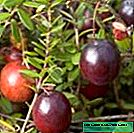
- Cranberry Pilgrim - late ripening variety, uneven color berries can be stored for a long time

- Big Pearl Cranberries have large berries; the variety is used for growing on an industrial scale.

- Variety Mac Farlin is characterized by high productivity, the color of berries is dark, almost black

- Cranberries Stevens harvest in late September - early October, berries can be stored for up to a year without processing
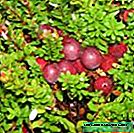
- Cranberries Hovez withstands frost and direct sunlight
Comparative characteristics of varieties of American cranberry large-fruited (table)
| Title | Size of berries (diameter, mm) | Productivity (kg / sq. M) | Berry coloring | Ripening period |
| Ben Lear | 18-22 | 1,6-2,0 | Maroon | Very early (end of August - beginning of September) |
| Pilgrim | 20-24 | 2,0-2,5 | Dark red | Medium (end of September - beginning of October) |
| Big Pearl | 18-20 | 1,5-2,0 | ||
| Mac Farlin, sometimes mistakenly write MacFarlane | 16-24 | 1,4-2,0 | ||
| Stevens | 18-24 | 0,8-2,5 | ||
| Howes (Howes) | 15-19 | 1,0-1,9 | Red | Late (October) |
Video: large-fruited garden cranberries
The choice of type and variety of cranberries for growing in the regions
- North and North-West of Russia, the Urals, Siberia: here you can only grow domestic varieties of bog cranberries, in large quantities growing in the wild on numerous peatlands of this region. Large-cranberry American cranberries here do not have enough summer heat for ripening berries.
- The central region of Russia (including the Moscow region), the north of Belarus: all varieties of bog cranberries grow splendidly. In the most favorable years, the harvest of the earliest varieties of large-cranberry is possible.
- Chernozem regions of Russia, southern Belarus, Ukraine: good conditions for all varieties of bog cranberries, as well as for early varieties of large-fruited cranberries. The advance of this crop to the south is limited by excessively high summer temperatures and dry air.
Where are cranberries growing?
In the wild, cranberries grow exclusively in sphagnum bogs, which are a completely unique ecosystem with very specific characteristics:

In nature, cranberries grow only on high sphagnum bogs.
- A high level of groundwater that goes directly to the surface of the earth.
- Extremely high soil acidity (pH 3.0 - 5.5).
- The soil is almost entirely composed of peat - a loose permeable organic substrate formed from dead peat moss.
- Sphagnum live peat moss covering almost the entire surface of such a swamp is a strong natural antiseptic that impedes the development of putrefactive processes.

Peat moss sphagnum - a unique natural antiseptic, the basis of the ecosystem of sphagnum bogs
Accordingly, the most suitable for cultivation of garden cranberries are peatlands. This is the only soil type that does not require any special preparation for planting cranberries. You can immediately mark the beds and plant.

Peat bog with close groundwater is an ideal place for growing cranberries
Heavy clay soils are completely unsuitable. In such areas, cranberry cultivation is possible only in peat-filled artificial trenches. In lowlands with clay soil, when trenches are constructed, the necessary slope and drainage should be provided so that water does not accumulate after heavy rains or melting snow. Unlike permeable “breathing” peat, waterlogged clay is similar to a cement mortar, roots choke and die.

Cranberries cannot grow on heavy clay - the roots will suffocate
Light sandy soils can be considered suitable only if there is the possibility of daily watering. They are well permeable to air and roots, but dry out too quickly. On sandy soils, a large amount of horse peat is required to increase the moisture capacity and achieve the desired acidity. To better maintain moisture, it is advisable to line planting trenches for cranberries with a plastic film in several layers.

Sandy soils are easily permeable to the roots, but do not hold water at all
Where to place cranberries in the garden
Cranberries need:
- loose, permeable, very acidic soil (pH 3.0 - 5.5);
- lack of weeds, especially perennial rhizomes;
- good lighting;
- groundwater is not more than half a meter from the surface of the earth (in extreme cases, it can be replaced by daily plentiful watering).

Cranberries need a very acidic soil (pH 3.0 - 5.5)
Cranberry Compatibility with Other Plants
Other plants from the heather family have similar requirements to cranberries to soil acidity: lingonberries, blueberries, blueberries, crowberry, rosemary, and rhododendrons. The closest needs are for cranberries, blueberries and water crowns, and in nature they often grow in the neighborhood on marsh hummocks, in places well-lit by the sun. Ledum grows on the same swamps, as well as berry herbaceous perennials from the Rosaceae family - cloudberry and princess. Blueberries are also moisture-loving, but prefer shady forest areas. Lingonberry loves drier places and good illumination, in nature it grows in rather dry pine forests on sandy soils, therefore it is better not to plant it in the garden on the same bed with cranberries because of the different watering regime. Good drainage is required for rhododendrons; they cannot tolerate excess moisture. In natural communities, all these plants are companions of conifers (spruce, pine, larch, juniper). When planting them in the garden, it is also advisable to add a little soil from the coniferous forest with wild heather to ensure that the soil contains the necessary mycorrhiza - special underground fungi that favor root growth.
Companion plants for cranberries (photo gallery)
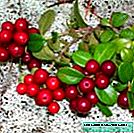
- Small lingonberry berries with a characteristic sour taste

- Strawberries covered with hard peel

- Blueberries are used for medicinal purposes.
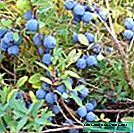
- Blueberries are consumed fresh and are also used to make wine.

- Cloudberries are used in therapeutic diet

- Cloudberry - a perennial herb in the northern regions

- Berries princesses look like raspberries

- The prince is a tonic, quenches thirst well
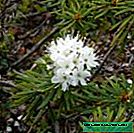
- Ledum marsh used in perfumery

- Daurian Rhododendron - an evergreen shrub
Do not plant cranberries directly under the crown of a tree: firstly, it needs good illumination, and secondly, the powerful roots of the trees very dry the soil.
When choosing neighbors for cranberries, it should be borne in mind that its long creeping shoots under good conditions quickly grow, covering the surface of the soil with a solid green carpet.
Under favorable conditions, cranberry thickets are very durable and remain in one place for many decades.
Soil preparation and cranberry planting
The high acidity of the soil required for cranberries (pH 3.0 - 5.5) is ensured by the use of large quantities of acidic peat during planting. Low peat does not have the desired acidifying effect due to its insufficient acidity.

Peat peat differs from lowland with a lighter color and coarse fiber structure
Differences between high and low peat (table)
| Peat type | Color | Structure | Acidity |
| Horse | Brown brown | Consists of large, coarse, well distinguishable plant fibers | Very high (pH 3.0 - 4.5) |
| Lowland | The black | Almost homogeneous, composed of small particles | Low (pH 5.0 - 5.5) |
On all soils, except natural peat bogs, cranberries are planted in specially prepared trenches with peat soil. The procedure is as follows:
- Dig a trench about half a meter deep, a meter or a half wide.
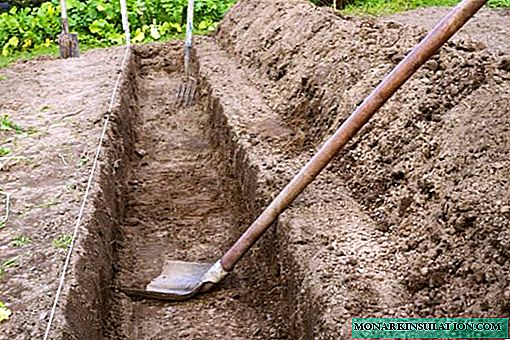
First, for a cranberry bed, you need to dig a trench half a meter deep
- The sides of the trench should be reinforced with antiseptic-soaked boards.
- If the soil is sandy, line the trench with a plastic film in 2-3 layers. At the bottom of the film in several places, pierce with a pitchfork so that there is no stagnation of water.
- If the soil is clay, lay a layer of broken brick for drainage at the bottom of the trench.
- Fill the trench with acidic peat, it is possible with the addition of river coarse sand in a ratio of 3: 1. It is also advisable to add a little decayed coniferous litter from the forest to make soil mycorrhiza.

Cranberry trenches are filled with acidic peat
- Water abundantly.
- Plant cranberry seedlings at a distance of 20-30 centimeters from each other.
- It is advisable to sprinkle the surface of peat soil with a centimeter layer of river sand to prevent weed growth.
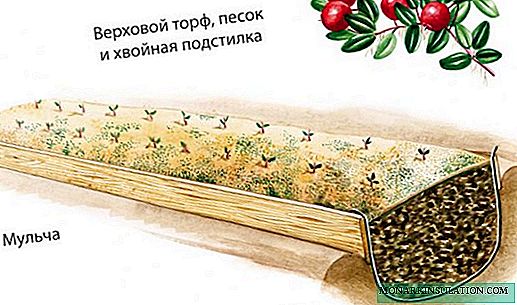
After planting cranberries, it is advisable to sprinkle the surface of the peat trench with a thin layer of river sand
- Water again.
- If the weather is hot, sunny, the first week it is recommended to shade planting with non-woven covering material.
It is impossible to use limestone crushed stone and other similar materials for the construction of trenches and drainage, which reduce the acidity of the soil.
It is best to plant cranberries in the spring, so that the plants have time to take root well over the summer. The first month after planting should be watered daily.
Cranberry Care
The main problem with growing cranberries is maintaining the necessary soil acidity (pH 3.0 - 5.5). To control acidity, a special indicator litmus paper is needed, which is sold in garden centers and in pet stores in the aquarium goods department. To find out the acidity, a small amount of soil is mixed with distilled water, a strip of indicator paper is immersed in this liquid, and its color is compared with the control scale available on the package.

Litmus indicator paper for determining the acidity of water and soil
Water for cranberry irrigation also needs to be controlled. First, it should be acidic enough, like the soil. Any acid can be used to acidify water, from vinegar essence to car battery electrolyte.
Safety: always add a small amount of acid to a container with a large amount of water, and nothing else. Concentrated acids are dangerous and cause burns on skin contact.
Secondly, the water should not be too hard. Most favorable soft water from rains, melting snow, from some natural lakes. Many wells and artesian springs have very hard water with a high lime content, such water is not suitable for cranberry irrigation.
Signs of hard water:
- poorly brewed tea, it turns cloudy and tasteless;
- soap, shampoo, washing powder do not foam well;
- ordinary soap immediately flakes out.
Cranberries should be watered regularly with soft acidic water, preventing the soil from drying out. In areas with a deep occurrence of groundwater (farther than half a meter from the soil surface), daily watering is required in the heat.
Cranberry top dressing
It is strictly forbidden to introduce manure, compost, bird droppings and other nitrogen-rich fertilizers under cranberries. From organic matter, only peat is well suited for it. The first year or two after planting, no fertilizer is required at all. Subsequently, only mineral fertilizers are applied in very small doses, only in spring and in the first half of summer (until mid-July). Approximate annual rate per 1 square meter (distributed in equal parts to 3 receptions):
- 5 g of urea,
- 15 g of superphosphate
- 10 g of potassium sulfate.
No chemical treatments for pests and cranberry diseases are needed.
Marsh cranberries winters well without additional shelter. Large-cranberry plantings can be slightly insulated with coniferous spruce branches.
On industrial plantations in regions without winter thaws, cranberries are sometimes frozen in ice for the winter. In the event of steady frost below -5 ° C, plantings are poured with water with a layer of 2-3 centimeters, after freezing it is repeated so that the plants are completely in the thickness of the ice. In the spring, excess water is discharged into the drainage system.
During flowering, beginning in the first half of June, cranberries can suffer from frost. For protection, flowering plantations are covered with agrofibre or plastic film at night. In the afternoon, shelter is removed.

Cranberries need frost protection during flowering.
Propagation of garden cranberries
Cranberries propagate vegetatively (by cuttings) and seeds.
Propagation of cranberries with green cuttings
This is the easiest way. In June, cuttings of about 10 centimeters long should be cut from young growing shoots and planted on a peat bed, leaving no more than 2-3 leaves above the surface. Water daily, preventing drying of the soil. Can be covered with a film to maintain moisture. You can immediately plant in a permanent place, 2-3 cuttings in 1 hole. Over the summer, cuttings successfully root.

The easiest way to propagate cranberries by rooting green cuttings
Cranberry seed propagation
In the absence of ready-made seedlings or cuttings, cranberries can also be grown from seeds. Varietal traits are rarely preserved during seed propagation, but plants grown from seeds are better adapted to local climatic conditions.
The procedure is as follows:
- Prepare a shallow pot filled with a wet mixture of horse peat with a little addition of river sand.
- Spread cranberry seeds on the ground.
- Sprinkle with a thin layer (1 millimeter) of river sand.
- Water carefully.
- Cover the pot with plastic wrap.
- Refrigerate for stratification at a temperature of + 3-5 ° С.
- Soak there for 2-3 months, airing daily and, if necessary, watering, so that the soil is always slightly damp.
- After the stratification is over, move the pot to a room with a temperature of + 15-20 ° C, continuing to water regularly.
- Shoots will appear in the next 2-4 weeks.
- After the appearance of several real leaves, seedlings are planted in separate pots with peat mixture.
- In the second half of June, plant plants in open ground on a peat bed.
Reviews
cultivating varietal is not difficult, the main thing to remember: she loves very acidic peaty soil, cranberry roots are superficial, do not go deeper than 10-15 cm so you can make acid ridges
Natali//forum.homecitrus.ru/topic/19666-neobychnyj-iagodnik-kliukva-i-brusnika-sadovye/
Today I have a 40 cm bed with cranberries. In principle, the plant is undemanding, the only condition is sour soil and plant on the bed without weeds, because pulling them out of cranberries is problematic - they are pulled out, as a rule, together with cranberries. Because cranberries throws branches, which then take root when in contact with the ground, forming a continuous rug.
Ryzhulya//www.forumhouse.ru/threads/22029/
I grew cranberries several years ago, grew well (likes acid soil, watering and partial shade), but I did not see any blossoms and berries. Grade "Pilgrim", prescribed in Interflora. She parted without hesitation.
Irina Kiseleva//forum.vinograd.info/showthread.php?t=8486
Cranberries are easily grown in lowland marshy areas with acidic peaty soil and close groundwater, and it is in such conditions that it grows in the wild. These inconveniences unsuitable for other crops can easily be turned into commodity cranberry plantations. If the initial characteristics of the site do not fit its requirements, growing cranberries requires expensive and time-consuming special events and may be of interest only for amateur gardening, like an exotic curiosity.























